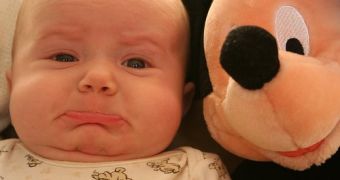Reproductive scientists in Texas, led by Dr. Richard R. Berhringer at the MD Anderson Cancer Center, have used stem cell technology to create male and female mice from two fathers.
The researchers explained that their study “exploits iPS cell technologies to combine the alleles from two males to generate male and female progeny, i.e. a new form of mammalian reproduction.”
The successful experiment began with the researchers manipulating fibroblasts from a male mouse fetus (XY chromosomes) to obtain an induced pluripotent stem (iPS) cell line.
Almost one percent of iPS cell colonies obtained, had no Y chromosome, thus becoming XO cells, which were injected into blastocysts from donor female mice.
The new blastocysts were then transplanted into surrogate mothers, which gave birth to female XO/XX chimeras, with one X chromosome from the original male mouse fibroblast.
The female chimeras, carrying oocytes derived from the XO cells, were mated with normal male mice, which resulted in some female and male offspring having genes coming from two fathers.
This technique could be used to preserve some animal species, and combine some genetic characteristics from two males, without outcrossing to females with different traits.
The scientists point out that “it is also possible that one male could produce both oocytes and sperm for self-fertilization to generate male and female progeny,” and this could prove very useful for preserving species without any females left.
The experiment could one day even apply to humans, and generate human oocytes from male iPS cells in vitro.
By using the in vitro fertilization, there would be no need for female XO/XX chimeras, even though surrogate mothers would still be necessary.
The researchers say that by using a variation of the iPS technique, “it may also be possible to generate sperm from a female donor and produce viable male and female progeny with two mothers.”
Of course, the “generation of human iPS cells still requires significant refinements prior to their use for therapeutic purposes.”
For now, having offspring from two fathers in a species of mammal is one big step toward the preservation of endangered species, towards improving livestock breeds and a big advancement in human assisted reproductive technology (ART).
This success also gives a bit of hope to same-sex couples who wish to have their own genetic children, noted the researchers.
The study appeared online, in the journal Biology of Reproduction.

 14 DAY TRIAL //
14 DAY TRIAL //